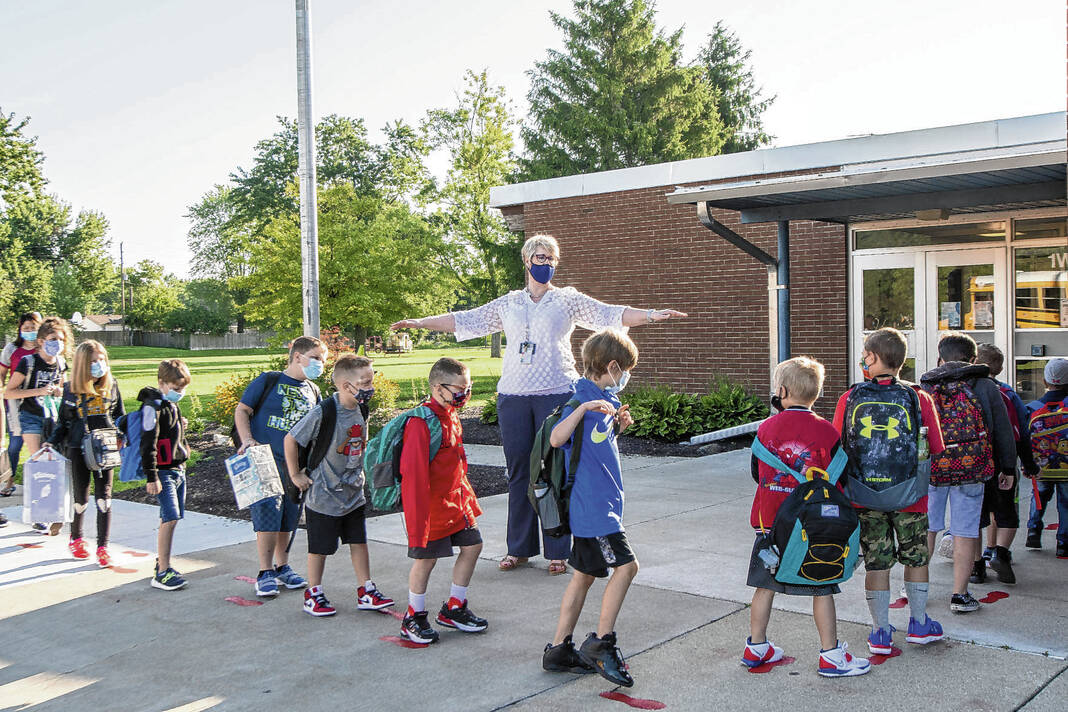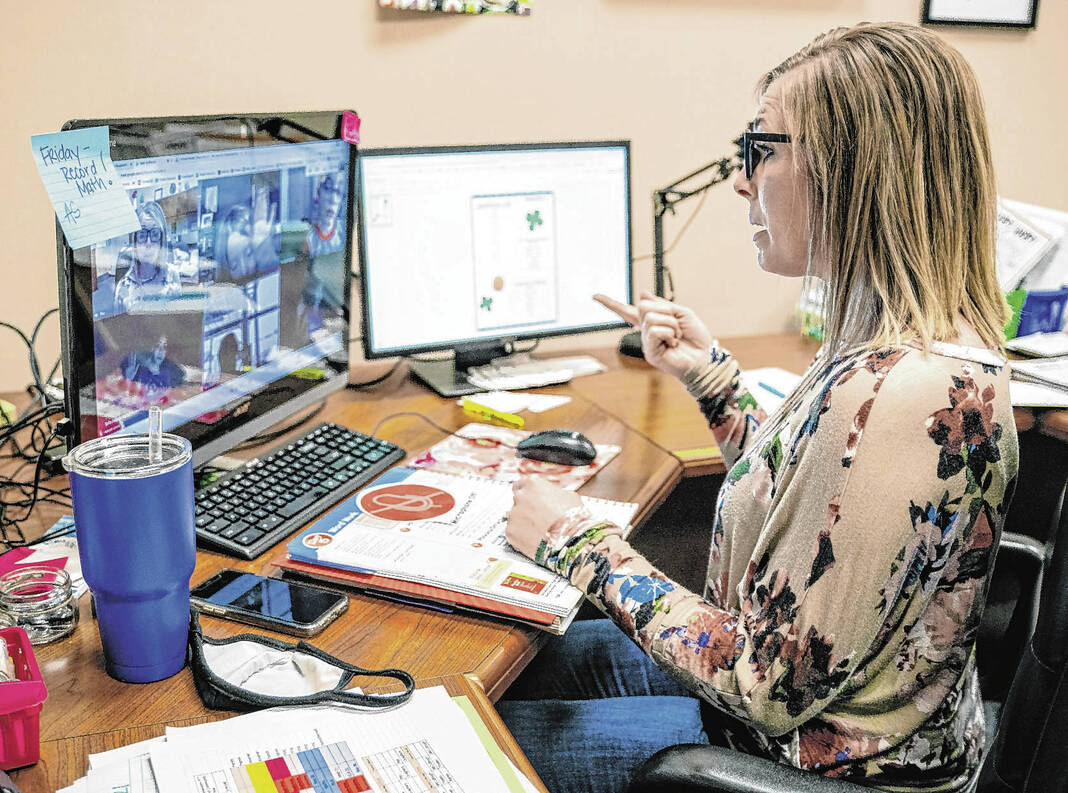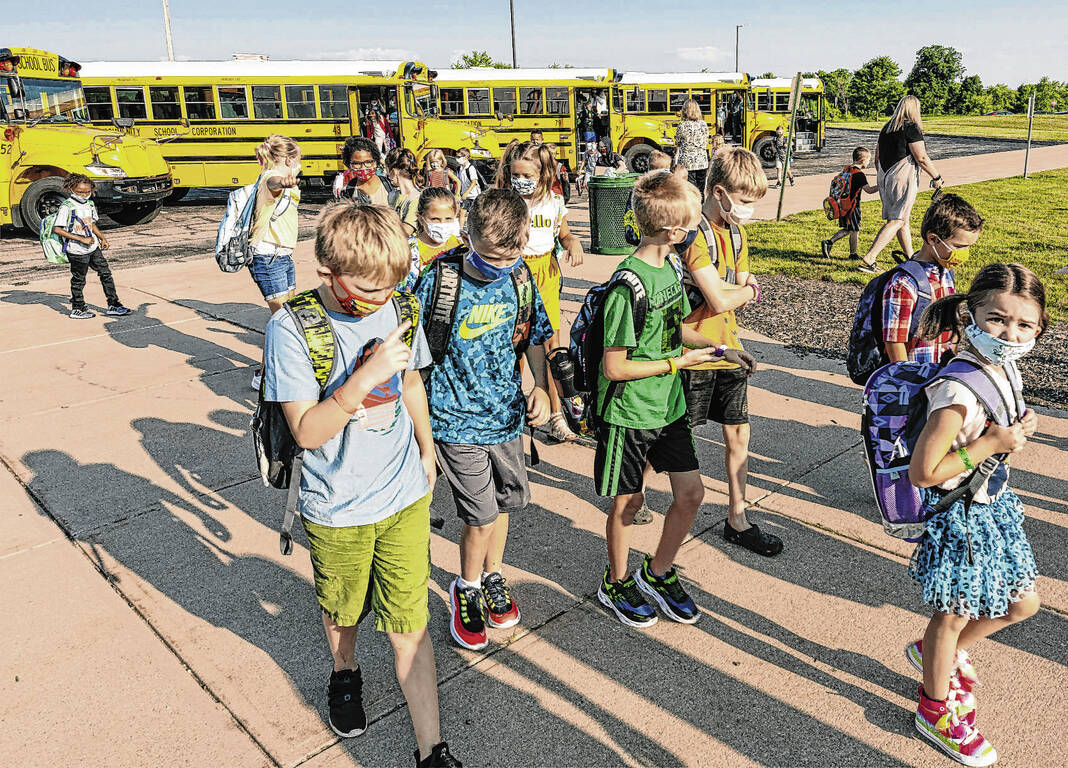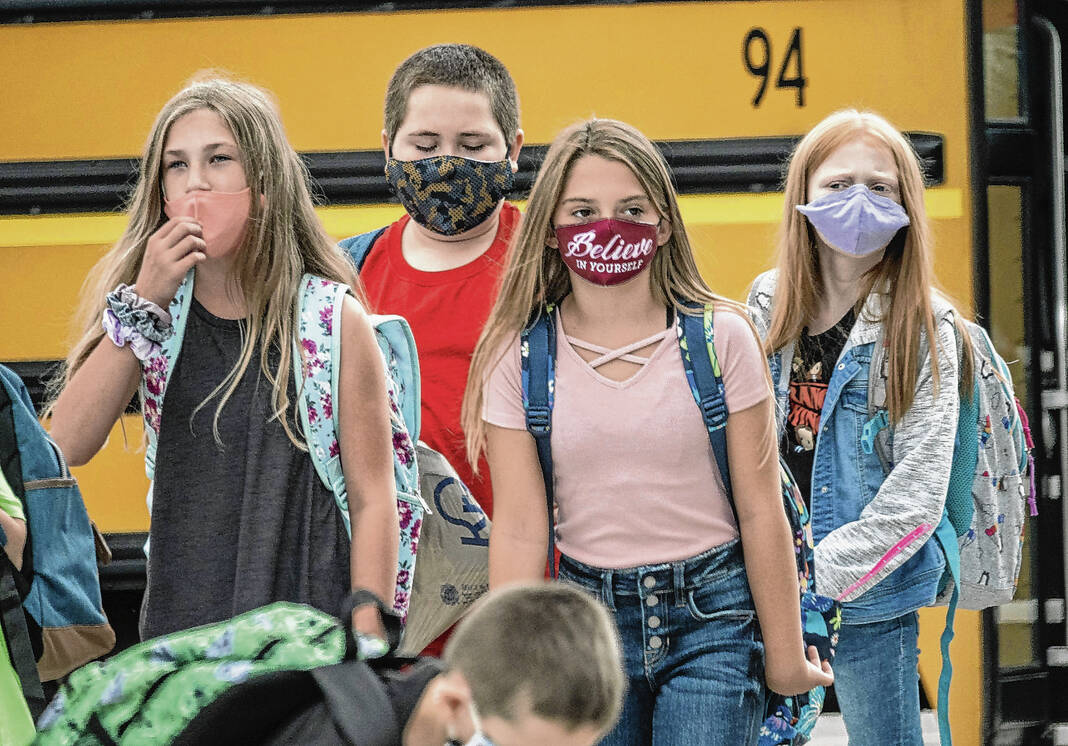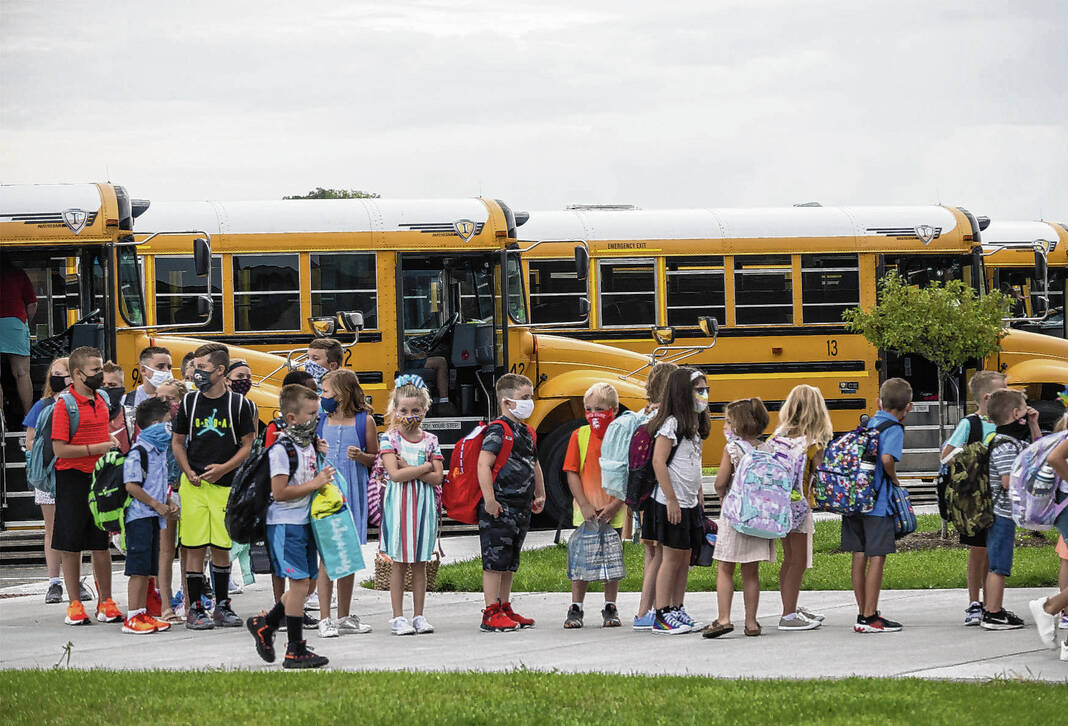Over the course of a few days, teachers, students, administrators and other staff members saw the environment and structure they had grown accustomed to crumble.
COVID-19, which was rapidly multiplying in cases, caused all Johnson County schools to close their doors during the week of March 16, 2020. They wouldn’t reopen them until five months later.
Lisa Blackwell, Center Grove schools’ assistant director of facilities, remembers telling her staff to go home for an unspecified amount of time.
“I told everyone to finish what you have to do and told the staff to go home indefinitely,” Blackwell said.
Blackwell had been following the virus since late 2019, when it was being tracked by the Centers for Disease Control and World Health Organization. As someone in charge of service contracts for building maintenance, she knew the possibility of coronavirus turning into a serious concern was too great to avoid planning for.
“I had a sick feeling in my stomach when I came to work and said ‘I don’t feel right about this.’ I felt this would be really bad. There was this horrible feeling I had, and in January, the first case came into the United States,” she said. “I started reaching out to our vendors, telling them ‘I need something that will help our staff and teachers know we’re on top of this and have the tools to combat this virus.’”
Closing the doors
As the school closure in March 2020 extended for the rest of the spring semester, it was a test of leadership for administrators and teachers alike.
While they couldn’t meet in-person, they had to make sure everything was running as smoothly as possible despite the sudden changes in protocol. For Clark-Pleasant schools superintendent Patrick Spray, that involved trying to connect with staff members and students, even in a virtual format, Spray said.
“I felt disconnected in a lot of ways. My focus had to be so intensely on what we were doing with COVID and what changes we had to communicate and how we keep staff supported moving forward,” Spray said.
“We tried to maintain a sense of calm and tried to establish our initial priorities, which were maintaining relationships with students and families as we closed out spring 2020. Another priority was making sure students were fed a lot on free and reduced lunch and making sure we fed thousands of meals a week to kids.”
Just two months after starting his job, Indian Creek Middle School Band Director Brett Beaman had to learn how to lead a band of 108 students without seeing them in his band room.
“It was very hectic at the beginning to go through everything and switch gears,” Beaman said. “We went from everything in person to 100% online overnight. We had to figure out how to do different online assignments and we did a lot of playing videos, once a week, and then online music theory assignments, rhythm counting, exploring musical careers or creating your own concerts.”
E-learning was the primary driver of education during the spring 2020 semester, and as the coordinator of connected learning at Center Grove schools, Katie Brennan had to make sure teachers were able to communicate with their students virtually for months on end, Brennan said.
“We were prepared for the transition but were not sure how long it would be,” she said. “When we got to the point we knew we would close down a couple of days prior, I was able to give all our classroom teachers greater access to online learning. I opened the Innovation Center and invited the teachers in. The technology team and connected learning team helped get their lessons transferred online and answered their questions.”
Teachers had concerns about making sure students were following the curriculum and not falling behind during online lessons. To do that, she encouraged teachers to set up Zoom lunches to connect with students and provide feedback for them.
As in-person classes were put on hold, so were several milestone events for high school seniors, a casualty of the pandemic.
Proms were canceled, while graduations were pushed back to scorching July days. At Greenwood schools, events like the military drive-by, where students going into the armed forces drove by, cheered by parents, staff members and community members, helped ease some of the sorrow felt by seniors, said Todd Garrison, Greenwood High School principal.
Coming back
Unlike in spring 2020, when the Indiana state government required all schools to close, the 2020-21 school year offered schools choices. Schools could either keep students completely virtual, bring them in part time on a hybrid schedule, or keep them in person every day. While schools traversed the three options throughout the school year, they all had an option for students who wanted to remain online yearlong to decrease the risk of getting infected.
While learning virtually may have benefited some students, the vast majority of pupils performed better when they were in classrooms, Garrison said.
“Some of the students flourished in (virtual learning), but I don’t think the data would suggest it was the best means of delivering instruction. We Zoomed our classrooms and students had to follow their bell schedule and followed along with teachers, who taught in-person and online students simultaneously through technology. They would check with the people in the class then check with students online to make sure they were good. It was a challenge,” he said. “Our teachers went above and beyond to deliver instruction and not have those gaps.”
At Indian Creek schools, some students didn’t have reliable internet access, making occasions when students weren’t in the classroom all the more challenging, said Sean Zachery, Indian Creek Middle School principal.
“Our high school chose to do live classes, kids logged in and viewed live classes. We didn’t go that route at the middle school because we didn’t feel we had enough kids with solid internet to do that,” Zachery said. “Once we headed down that route, the teachers did a solid job of developing their lesson plans. With hybrid, probably the best we could do with kids not doing work at home, they saw their teachers the next day and they helped get them caught up. It was the best of a bad situation.”
Returning to normalcy
The 2021-22 school year has had more tones of pre-pandemic life than the three semesters prior, but the points of greatest contention between parents and school leaders came at the start of the year, when the decision about mask mandates, previously in the hands of the state, was put on school boards.
At school board meetings, public comment sections lasted as long as two hours as parents went back and forth with board members about their decisions. The change of who made decisions regarding masks added stress to interactions with the community, Garrison said.
“I think that when it was mandated by the state and the government was making announcements, everyone recognized the schools were placed in this position and weren’t going to be negligent about mask wearing. I don’t think there was as much emotion behind the decisions,” he said.
“When it was a local decision, people voiced their opinions more emotionally than earlier. I listened to the arguments and ultimately we landed where we now. It was a tough time. We always kept student safety in mind. A lot of people were not able to do some things. My own son graduated in 2020 as a baseball pitcher and threw not one pitch his senior year. When people say I don’t understand, I understand what it’s like for my son to lose his senior season. We lived through it and have to make tough decisions, but keeping them safe is a priority over participation.”
School nurses were some of the most overburdened employees, facing the challenges of tracing close contacts of COVID-19 cases, caring for sick students and keeping track of changing guidance, Edinburgh schools nurse Allison Small said in an email.
“School nurses already had extremely time-consuming jobs to do, caring for sick, stressed and injured children, the mountains of documentation, health plans, vision and hearing screening reports, and immunization compliance and reports,” she said. “Then throw in new guidelines to follow and enforce, contact tracing, and COVID reporting and documentation, and there is always something that seems left undone no matter how early your day starts or how late you keep working.”
In addition to added responsibilities, school nurses faced the burden of delivering the news to parents when their child had to quarantine for two weeks. They sometimes received combative responses.
In those situations, nurses were advised to just stick to the facts, and if a parent used abusive language, to hang up the phone, Spray said. Nurses had to keep track of data and student information, the date of infections, COVID tests, positives or negatives, date of return in the database and report those to two other state agencies.
“We had to hire additional staff to do those tasks at that point in time. They had a lot on their shoulders,” Spray said. “When you recognize people are overworked and overwhelmed you give them grace, and we made sure to recognize them, support them and talk to them so they know we know their value and work. We took them out to a steak dinner, bought them some Whiteland Warriors swag, anything we could do to help them.”
Moving forward
In February, Indiana ended its contact tracing requirements for schools, which resulted in local schools lifting their mask mandates. With the changes, many classrooms today look just as they did in 2019, although there are some things that will remain the same.
At Center Grove schools, almost all the sanitary precautions and equipment such as Clorox sprayers put in place during the pandemic are still utilized, Blackwell said.
“Now, we have them as a viral tool because there are so many things people can get sick from, not just COVID but strep,” she said. “This year, I asked ‘Are we still wanting hand sanitizer in classrooms, wipes?’ The faculty and staff said ‘absolutely.’ It makes them feel more comfortable, and so we’ve used enhanced cleaning and I think it will be a forever tool here.”
New virtual techniques, including teachers videotaping themselves discussing key lesson topics, instead of referring students to videos of people they don’t know teaching those topics, will remain past the pandemic, Zachery said.
“We’re keeping that a part of inclement weather snow days,” he said. “Kids can see them presenting new material, and it’s something teachers did very well, as opposed to a Khan Academy video of someone they didn’t know or a slideshow of someone writing on a chalkboard or overheard projector, they’re seeing their teachers teach new material.”


